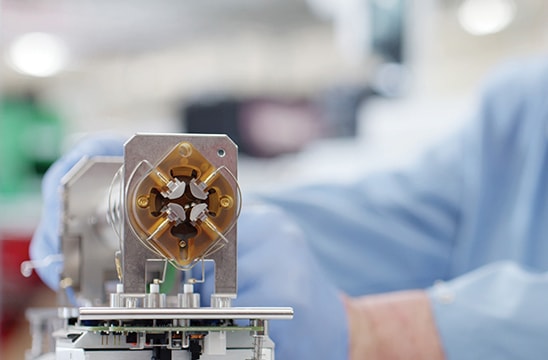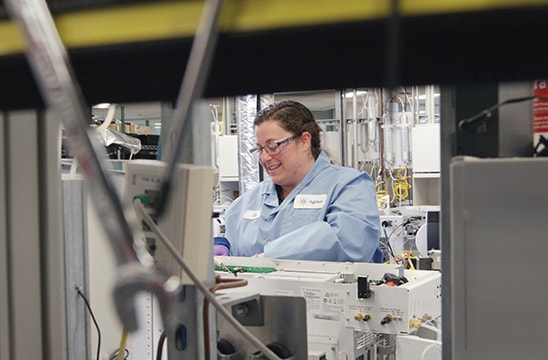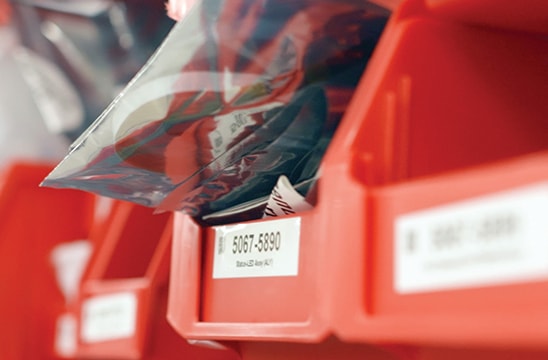Key Takeaways
- Certified pre-owned instruments play a crucial role in reducing the demand for new instruments. By opting for a refurbished or pre-owned instrument, labs can help conserve natural resources that would otherwise be used to manufacture new systems.
- The economic benefits of affordable certified pre-owned and refurbished instruments extend beyond cost savings. Labs can allocate their limited financial resources to other sustainability initiatives, improving overall lab operations.
- Initiatives such as buy-back programs, refurbishment, and recycling of parts contribute to resource efficiency. This holistic approach aligns with the goal of achieving sustainable innovation while minimizing economic and environmental costs.
The circular economy approach
In pursuing sustainable scientific research, lab instrument manufacturers and managers can significantly reduce their ecological footprint by embracing the principles of the circular economy. This strategy ensures that lab instruments are utilized to their maximum potential throughout their lifespan. Once an instrument reaches the end of its useable service life, it’s not simply discarded. Instead, it embarks on a new journey through repair, reuse, refurbishment, and remanufacturing, breathing new life into the instrument or its components.

Ultimately, even when an instrument can no longer be refurbished or remanufactured, recycling ensures that its components find new purpose in the creation of new products. This cyclical process extends the usable life of lab instruments and promotes a more sustainable and responsible approach to scientific research.
The circular economy starts in the instrument design phase as manufacturers build durable, efficient, and easy to repair or upgrade products, reducing the need for new resources. Similarly, instrument providers continue to revamp their manufacturing processes to minimize waste and improve efficiency, helping to optimize resource use, use more environmentally friendly materials, and limit energy consumption. And manufacturers can work with end-users to maintain and repair instruments to ensure optimal performance and extend their lifecycle.
Many of these new initiatives are too recent, however, to directly impact the thousands of older instruments that are actively working in labs around the world or sit unused in empty rooms, closets, and loading docks. Thus, the desire to apply the principles of circular economy to these instruments has led to growth in the secondary or pre-owned instruments market.
Just as a pre-owned automobile can find new life in the hands of another driver, so too can pre-owned instruments find new life in labs that might have a limited budget for new technology, looking to increase redundancy or capacity with existing instruments, or who are looking to upgrade their existing technologies without spending money on newly manufactured instruments. To help offset the costs of even pre-owned instruments, purchasers can reach out to the companies that produced their current instruments to see if they can take advantage of trade-in or buy-back programs.

And just like used automobiles, not all pre-owned instruments are created equal. To ensure quality and reliability, the reseller should be able to certify that the instrument performs like new and meets the original specifications.
Working with the original manufacturer is often the best way to ensure this as they have the fullest access to the original parts and latest software, understand best what parts are interchangeable or can be upgraded to new standards, and can guarantee that the refurbishment or rebuild is performed by in-house experts who are trained on and in some cases, designed those instruments. Installation and introductory training should also be conducted by OEM-trained engineers. This will ultimately yield the longest possible lifespan for the instrument’s second life.
To further support the attractiveness of pre-owned instruments, some manufacturers and resellers will offer service, support, and warranties, just as they do for new instruments, ensuring that labs can minimize downtime should problems arise later.

Promoting sustainability
By helping to reduce the demand for new materials needed in new instrument manufacturing, pre-owned platforms help reduce the depletion of natural resources required to build those systems. Furthermore, refurbishment using recycled parts generally has lower energy requirements than the movement of raw materials and their manufacture into parts and their assembly into a new instrument. Refurbished units may also include newer components that help improve operational efficiencies while reducing energy and/or resource demands. This could even translate into smaller utility bills. Together, these features can help a lab to significantly lower its environmental footprint.
The economic benefits of less expensive certified pre-owned and refurbished instruments may also provide environmental benefits by allowing labs to distribute limited financial resources to other initiatives, such as improving sustainability in other areas of lab operation. The lower prices also allow labs to purchase like-new instruments with more features or that better suit analytical applications. This offers the opportunity to expand the breadth of tests that can be run in-house and/or optimize experimental design to improve data generation while reducing reagents and consumables usage.
Even as the demands and need for innovation in all scientific disciplines is increasing, so is the awareness of the economic and environmental costs of achieving those innovations. Labs of all types and scales have an opportunity to reduce those costs through a variety of initiatives, just one of which is applying a circular economy approach to the purchase, use, maintenance, and disposal of lab instruments.
By extending the useful life of equipment through participation in buy-back programs, refurbishment and upgrades to pre-owned instruments, and recycling of parts, labs can use their limited resources more efficiently, facilitate affordable entry or expansion of other research labs, and keep thousands of instruments out of landfills each year. And when the landfill is the ultimate destination, finite materials and still-useful parts can be recycled to find new life in refurbished instruments or other products.
Understanding the lingo
When purchasing a pre-owned instrument, it is critical to understand its current state of operation.
- Pre-owned: indicates you are not the first owner, but with more information, it can be possible to know if the instrument operates as it did when it was new.
- Refurbished: suggests that parts of the instrument have been replaced. This step may also include upgrades in hardware or software to achieve more recent standards.
- Certified: indicates that the company selling the pre-owned instrument has not only replaced defective or worn parts and possibly upgraded systems but confirmed its performance and will stand by its work, often through like-new warranties.
- Recycled: when an instrument has reached the end of its useful life, manufacturers can harvest parts that can still be used to maintain instruments in labs or recycle them to refurbish or rebuild other instruments entering the circular economy.
Learn more about Agilent’s Certified Pre-Owned Instruments program.